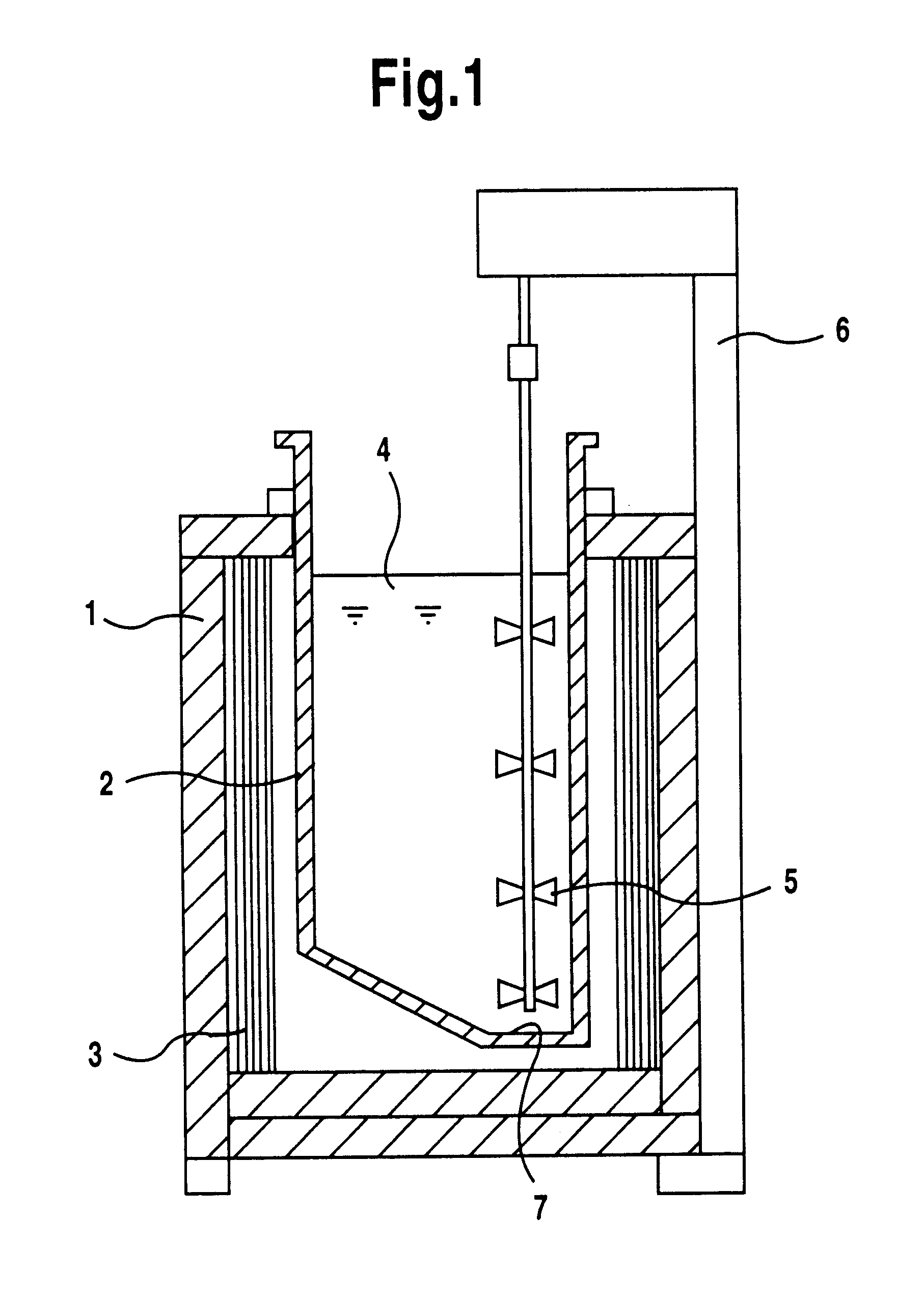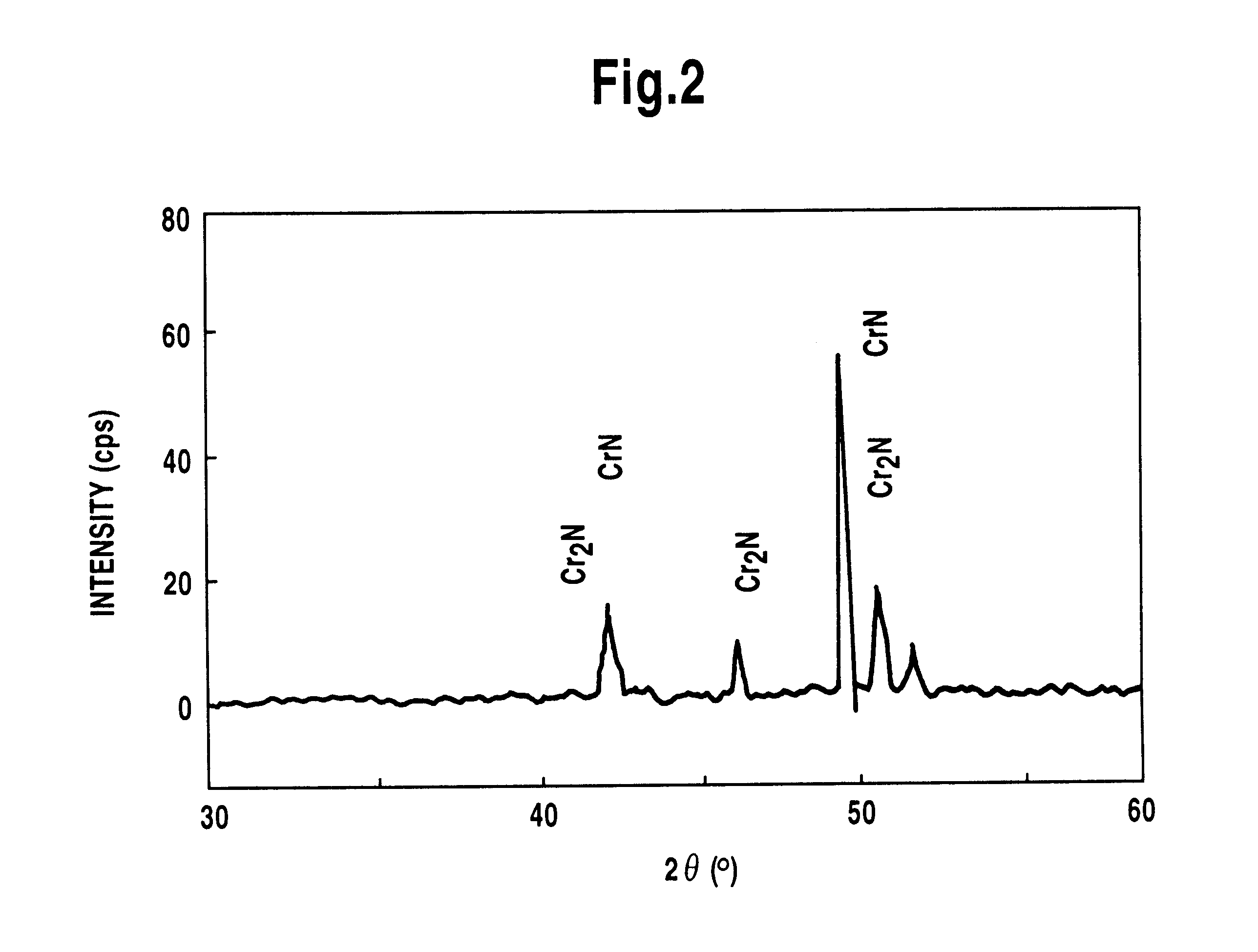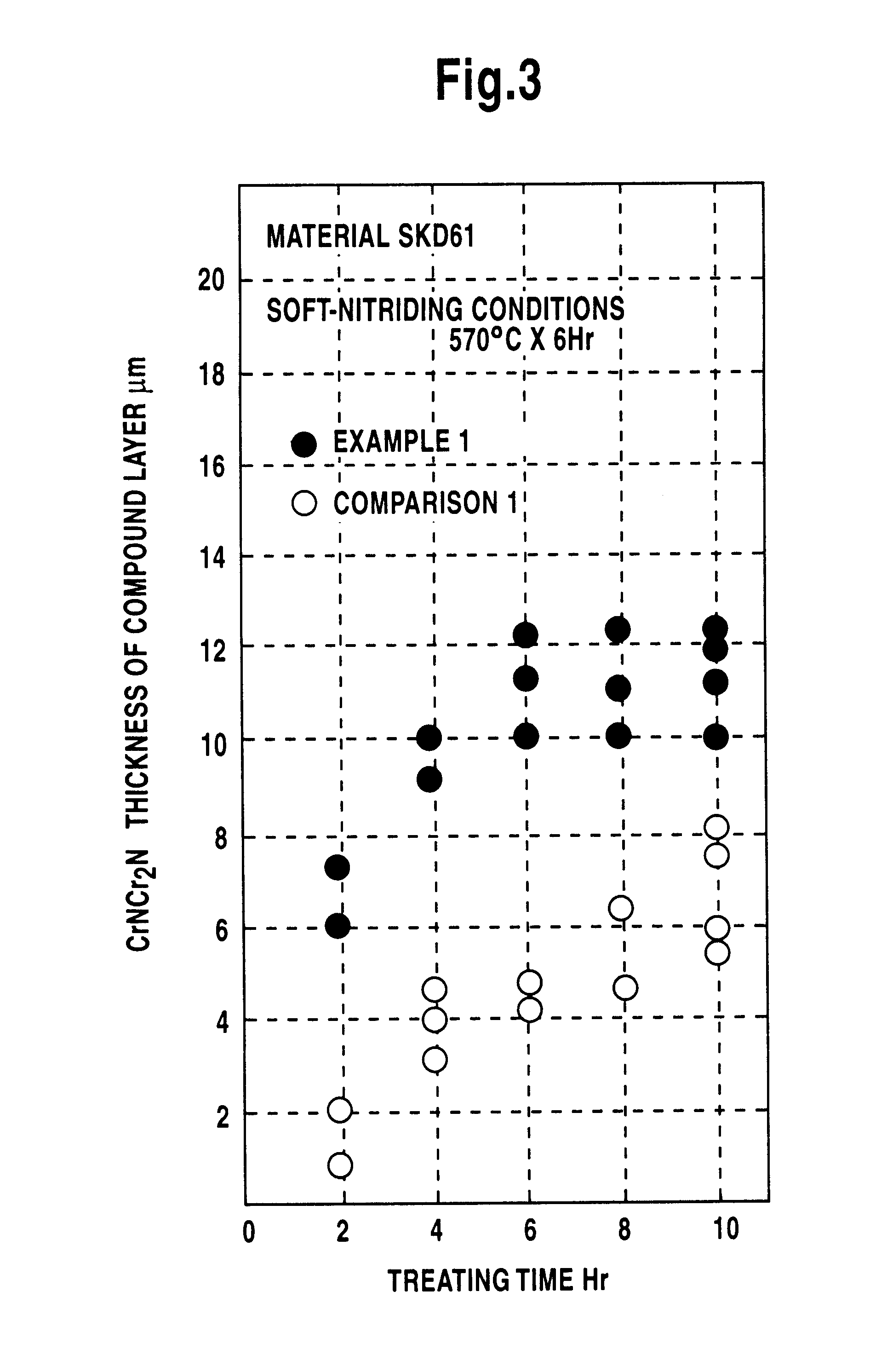Method for treating surface of ferrous material and salt bath furnace used therefor
a technology of ferrous material and salt bath furnace, which is applied in the direction of solid-state diffusion coating, coating, metallic material coating process, etc., can solve the problems of chromium carbide nitride layer difficulty, erosion of the to be treated article, and salt bath agent other than chloride which is not practically suitable at all
- Summary
- Abstract
- Description
- Claims
- Application Information
AI Technical Summary
Benefits of technology
Problems solved by technology
Method used
Image
Examples
example 2
After fluorination and gas soft-nitriding conjugated treatment, the nitriding-treatment of diffusion-treatment under N.sub.2 gas atmosphere was carried out using a test piece of SKDG61 material under the following conditions so as to form a nitrogen-diffused layer. Then, the salt bath treatment was conducted in the same conditions as in the Example 1.
[Nitriding treatment conditions]
Atmosphere: Fluorination+gas soft-nitriding conjugated treatment (NH.sub.3 :N.sub.2 =25:75)+diffusion treatment (N.sub.2)
Temperature.times.time: gas soft-nitriding conjugated treatment: 500.degree. C..times.3 hours
: diffusion-treatment: 500.degree. C..times.0.75 hours
Thickness of nitrogen-diffused layer: 50 to 60 .mu.m
As a result, a chromium-concentrated layer was formed in thickness almost the same as the chromium carbide nitride layer of the Example 1 and the same effect was obtained.
(3) A nitrogen-diffused layer
example 3
The nitriding-treatment was carried out using a test piece of SKD61 material under the same nitriding conditions as in the Example 1. Thus obtained nitrogen compound layer was deleted by shot peening so that the nitrogen diffused layer was remained. Then, the salt bath treatment was conducted in the same conditions as in the Example 1.
As a result, a chromium-concentrated layer was formed in thickness almost the same as the chromium carbide nitride layer of the Example 1 and the same effect was obtained.
(4) A nitrogen diffused layer
example 4
The nitriding-treatment was carried out using a test piece of SKD61 material under the same nitriding conditions as in the Example 1. Thus obtained nitrogen compound layer was deleted by immersion in acid so that the nitrogen diffused layer was remained. Then, the salt bath treatment was conducted in the same conditions as in the Example 1.
As a result, a chromium-concentrated layer was formed in thickness almost the same as the chromium carbide nitride layer of the Example 1 and the same effect was obtained.
(5) A nitriding layer+A chromium-plated layer.
PUM
| Property | Measurement | Unit |
|---|---|---|
| temperature | aaaaa | aaaaa |
| temperature | aaaaa | aaaaa |
| temperature | aaaaa | aaaaa |
Abstract
Description
Claims
Application Information
 Login to View More
Login to View More - R&D
- Intellectual Property
- Life Sciences
- Materials
- Tech Scout
- Unparalleled Data Quality
- Higher Quality Content
- 60% Fewer Hallucinations
Browse by: Latest US Patents, China's latest patents, Technical Efficacy Thesaurus, Application Domain, Technology Topic, Popular Technical Reports.
© 2025 PatSnap. All rights reserved.Legal|Privacy policy|Modern Slavery Act Transparency Statement|Sitemap|About US| Contact US: help@patsnap.com



